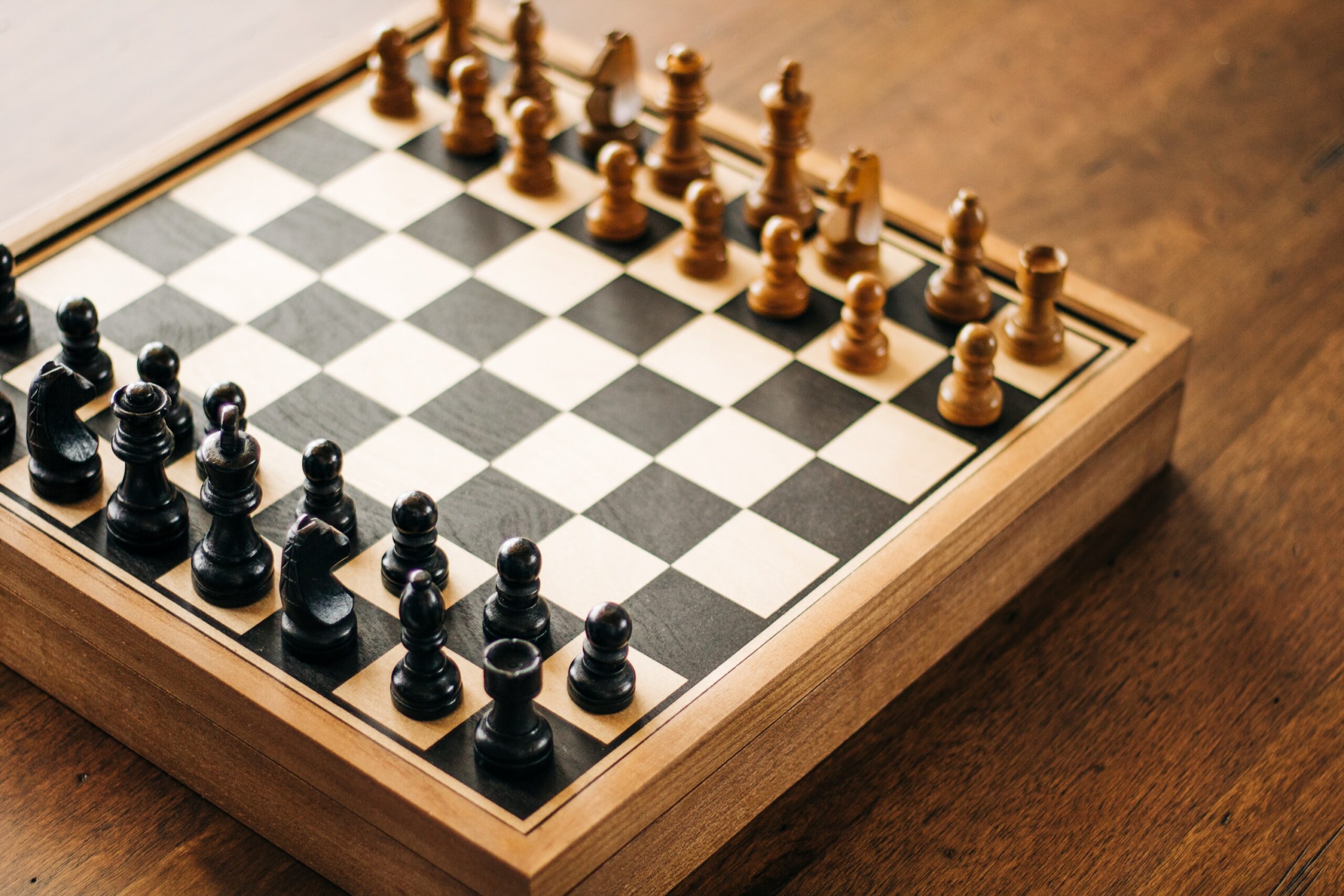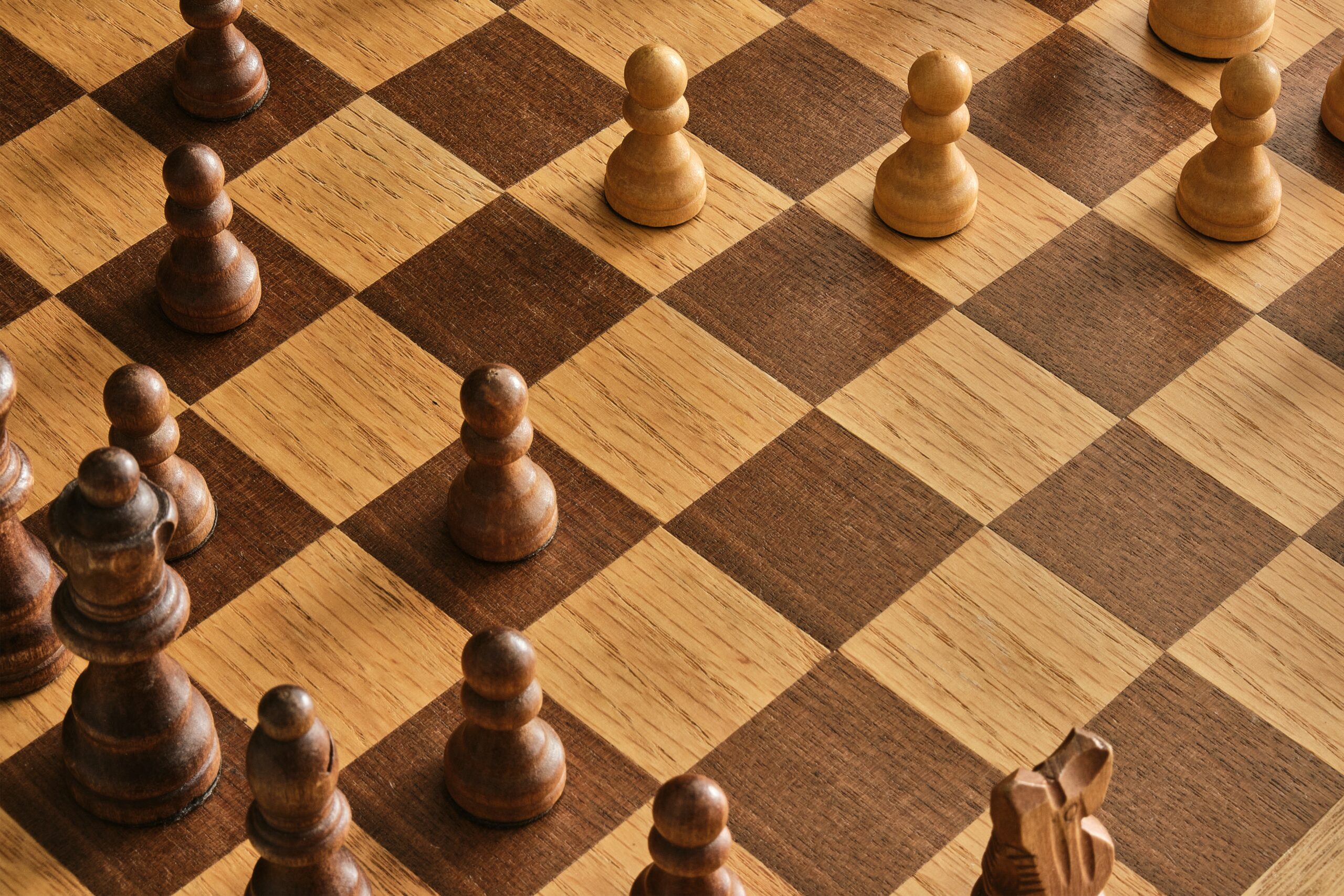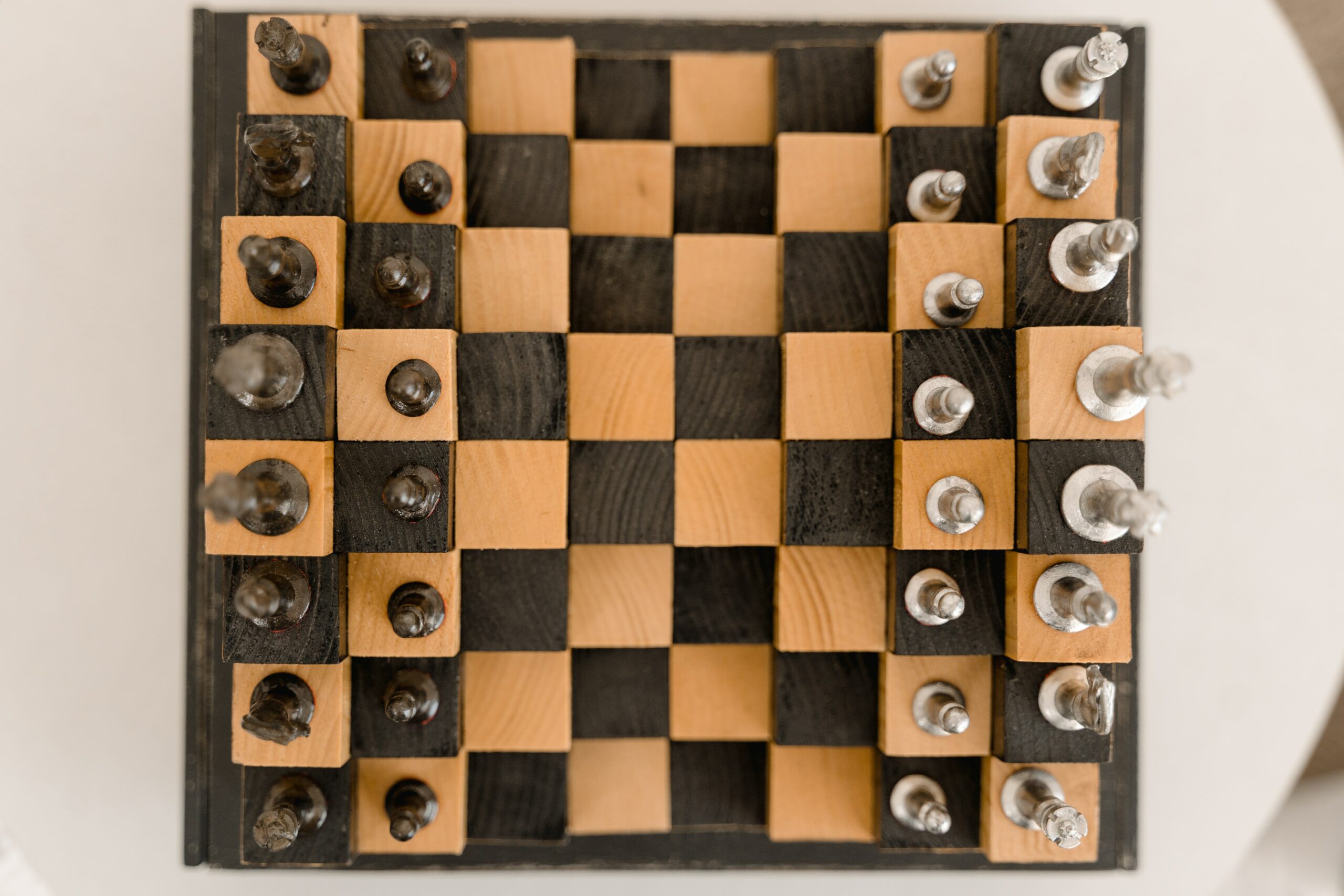Chess is a timeless game that has captivated minds for centuries. From the strategic moves to the elegant pieces, every aspect of chess is designed to engage players and challenge their intellect. At the heart of this intriguing game lies the chess board, the essential battleground where the battles unfold.
In this article, we will delve into the details of what makes a chessboard unique, from its dimensions and colors to the materials used and special markings. So, if you’re curious about the secrets that lie within a chessboard, let’s embark on this journey of discovery together!
What are the dimensions of a standard chessboard?
The standard chess board, recognized and used worldwide, consists of 64 squares arranged in an 8×8 grid. Each side of the board has eight squares, forming a total of 32 squares for each player.
The dimensions of a square on the board may vary, but the standard size typically ranges from 5.5 to 6 centimeters (approximately 2.2 to 2.4 inches). The overall dimensions of a standard chessboard are approximately 44 to 48 centimeters (around 17.3 to 18.9 inches) in width and length, making it compact and portable for gaming on the go.
How many squares are there on a chessboard?

As mentioned earlier, a standard chessboard consists of 64 squares. However, there are other variations of chess boards with different numbers of squares. Mini chess boards, with a 4×4 grid, offer a quick and engaging game with 16 squares in total.
On the other hand, giant chess boards designed for outdoor play can have as many as 144 squares in a 12×12 grid. Additionally, chess boards can be customized, allowing for different numbers of squares based on specific designs or game variants.
What colors are used on a chessboard?
Traditionally, chess boards consist of alternating light and dark squares, creating a visually striking and iconic pattern. The light squares are often white or a light cream color, while the dark squares are black or a deep brown shade.
This classic color scheme not only enhances the elegance of the chess board but also facilitates easy identification of different pieces during the game. The contrast between the light and dark squares ensures that each move on the board is clear and well-defined, keeping players immersed in the tactical battle.
Are there different types of chess boards?
Indeed, there is a diverse range of chess boards available, catering to different preferences and settings. While the standard chessboard is widely recognized, variations exist to suit various needs.
For instance, mini chess boards with smaller dimensions are popular for travel or quick games, while giant chess boards with larger dimensions provide a unique playing experience. Additionally, specialized 3D chess boards offer an innovative twist on the traditional game, introducing unconventional layouts and designs.
| Chess Board Type | Description | Unique Features |
|---|---|---|
| Standard Wooden Chess Board | Crafted from high-quality woods like maple, rosewood, or ebony | Elegant and luxurious feel, durable construction |
| Vinyl or Cardboard Chess Board | Affordable and lightweight option, perfect for beginners | Portable and easy to store, suitable for travel |
| Magnetic Chess Board | Contains magnets to secure the pieces during travel | Convenient for playing on the go, with no risk of pieces falling off |
| Themed and Decorative Chess Board | Features designs inspired by historical events, famous battles, or fantasy worlds | Collector’s items, visually stunning and unique |
| Giant Chess Board | Designed for outdoor play with larger dimensions | Engaging for all ages, perfect for garden or park settings |
What materials are chess boards made of?
Chess boards can be crafted from various materials, each offering unique attributes and aesthetics. Wooden chess boards are cherished for their timeless beauty and durability. Maple, known for its light color and fine grain, creates a clean and elegant look.
On the other hand, rosewood and ebony wood boast rich and dark tones, lending a touch of sophistication to the game. Other materials like glass and marble add a modern and artistic twist to traditional chess boards, turning them into stunning display pieces.
Whatever material you choose, a well-crafted chess board enhances the overall gaming experience and brings pleasure to both the eyes and the fingertips.
How are the squares on a chessboard numbered?
The squares on a chessboard are commonly identified using a combination of letters and numbers. The letters, ranging from ‘a’ to ‘h,’ represent the columns from left to right. The numbers, from ‘1’ to ‘8,’ indicate the rows from bottom to top.
Using this alphanumeric system can easily refer to specific squares on the chess board, allowing for precise moves and strategic calculations. The notation is commonly used in chess books, puzzles, and recording game moves, enabling players to analyze and study games played by grandmasters.
Why is the chessboard always placed with a light square in the right-hand corner?
The positioning of the chess board, with a light square in the right-hand corner, is a long-standing convention upheld by the chess community. This arrangement ensures uniformity and consistency in chess competitions and facilitates easier communication between players.
Aligning the chess board in this manner can maintain a standard orientation throughout games, no matter where they play or against whom they compete. This convention, though seemingly simple, adds to the overall fairness and clarity of the game, making it accessible and enjoyable for players across the globe.
What is the purpose of the border around the chessboard?
The border surrounding the chess board serves multiple purposes, enhancing both the functionality and aesthetics of the game. Here are some key purposes of the border:
-
Boundary: The border acts as a clear boundary, defining the playing area and separating it from the surrounding environment. It provides a designated space for players to focus on the game without distractions.
-
Protection: The border prevents chess pieces from accidentally falling off the board during intense gameplay. It ensures that the pieces remain within the designated area, allowing for smooth and uninterrupted matches.
-
Visual Appeal: The border contributes to the overall visual appeal of the chessboard. It frames the playing area, giving it a polished and complete look. The border’s design and finish can add an extra touch of elegance to the board.
-
Organization: The border helps in organizing the chessboard, providing a neat and structured layout. It keeps the squares aligned and ensures that the chessboard maintains its proper shape.
-
Transportation: The border also aids in the transportation and storage of the chessboard. It provides a protective barrier, preventing damage to the board or the pieces during transit.
Are there any special markings on a chessboard?
In certain chess boards, you may find special markings or notations to assist in specific gameplay situations. One common feature is algebraic notation, where letters and numbers are printed along the edges of the board.
This notation system aids in recording and referencing moves, enabling players to analyze and review games more effectively. Furthermore, some chess boards include additional markings to indicate the starting positions of the pieces during tournament play.
How is a chessboard different from a checker’s board?
Chess and checkers, though both played on similar boards, are distinct games with different rules and objectives. One key difference lies in the size of the board and the number of squares. Chess boards consist of 64 squares arranged in an 8×8 grid, while checkers boards typically have 64 squares as well but with a 10×10 or 12×12 layout.
Another notable distinction is the movement and capabilities of the pieces. In chess, each piece has its unique set of rules and movements, contributing to the complex strategy of the game. On the other hand, checkers’ pieces can only move forward and capture the opponent’s pieces by jumping over them. These variations in rules and gameplay make each game a captivating experience in its own right.
Can a chessboard be customized?

Absolutely! Chess boards offer ample room for customization, allowing players to personalize their gaming experience. Customized chess boards can feature unique designs, patterns, or even artwork, making them truly one-of-a-kind.
You can select specific woods, finishes, and sizes to create a chessboard that aligns with your style and preferences. Furthermore, some chess enthusiasts go the extra mile by commissioning custom-made chess boards that showcase intricate carvings or engravings, transforming the board into a work of art.
Are there any rules regarding the design of a chessboard?
While there are no strict rules regarding the design of a chessboard, certain guidelines and recommendations exist to ensure optimal gameplay and aesthetics. The size of the squares should be proportionate to the size of the chess pieces to allow for comfortable movement and clear visibility.
The contrast between the light and dark squares should be distinct and easily distinguishable to prevent confusion during play. Additionally, it’s essential to select materials that are sturdy, durable, and resistant to wear and tear, ensuring that the board can withstand countless battles and last for years to come.
Why do tournament chess boards have algebraic notation?
Tournament chess boards often incorporate algebraic notation as a standard practice to facilitate accurate recording and analysis of moves. Algebraic notation provides a concise and universally understood way of documenting chess games, making it easier for players, coaches, and spectators to study and follow the progression of the match.
It enables the recreation of games for analysis, allowing players to identify mistakes, explore different strategies, and learn from the moves of seasoned professionals. The use of algebraic notation in tournament chess boards promotes transparency and consistency, creating a level playing field for competitors and enhancing the overall integrity of the game.
Is there a recommended size for the chess pieces on a board?
While there is no fixed rule regarding the size of chess pieces, certain recommendations and proportions are commonly followed. The height of the king, the tallest piece on the board, typically ranges from 9.5 to 11.5 centimeters (around 3.7 to 4.5 inches) for standard-sized sets.
The other pieces, including the queen, rooks, bishops, knights, and pawns, are proportionate to the height of the king, ensuring a balanced and aesthetically pleasing set. However, it’s important to note that personal preferences and the intended use of the chess set may influence the selection of different sizes.
Whether you prefer a traditional Staunton set or an artistic and unconventional design, finding a set that appeals to your taste and comfort is key to enjoying the game to its fullest.
How should a chessboard be stored and maintained?

To preserve the beauty and longevity of a chessboard, proper storage, and maintenance are essential. It is advisable to keep the chess board in a clean and dry environment, away from excessive humidity or direct sunlight.
When not in use, store the board in a protective case or cover to prevent dust accumulation and potential damage. Regularly clean the board with a soft cloth or brush to remove any dirt or debris, taking care not to scratch the surface.
If the chessboard is made of wood, applying a light coat of wax or specialized polish can help maintain its luster and protect it from moisture.
In Conclusion
A chessboard is much more than just a playing surface; it is a canvas for intellectual battles and a gateway to endless possibilities. From its dimensions and colors to the materials used and special markings, every aspect of a chess board has been meticulously designed to enhance the game.
Whether you are a seasoned player or a curious beginner, understanding the intricacies of a chessboard adds depth and appreciation to the game. So, next time you sit down to play, take a moment to admire the craftsmanship and thoughtfulness that go into creating this iconic game board.




